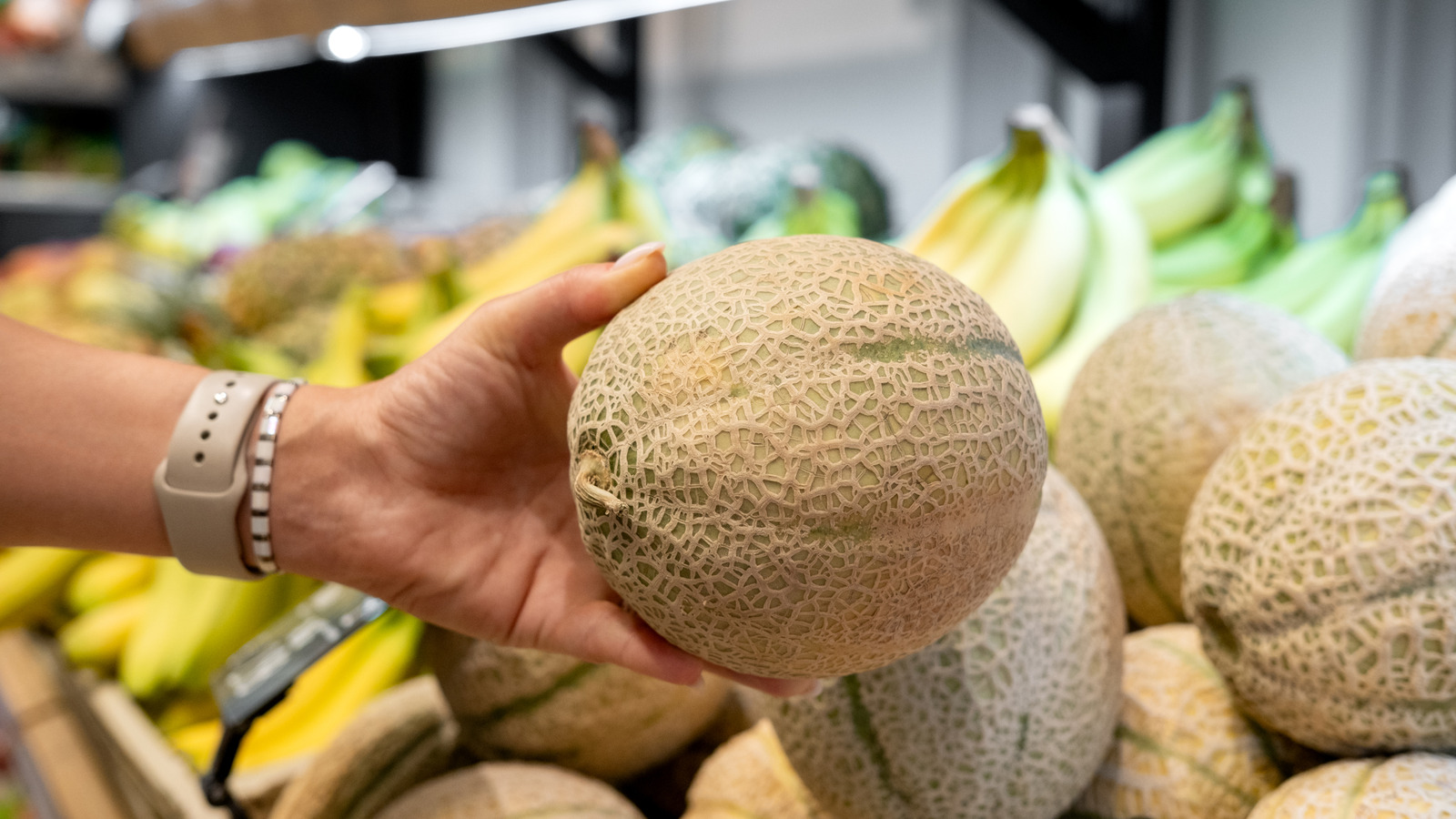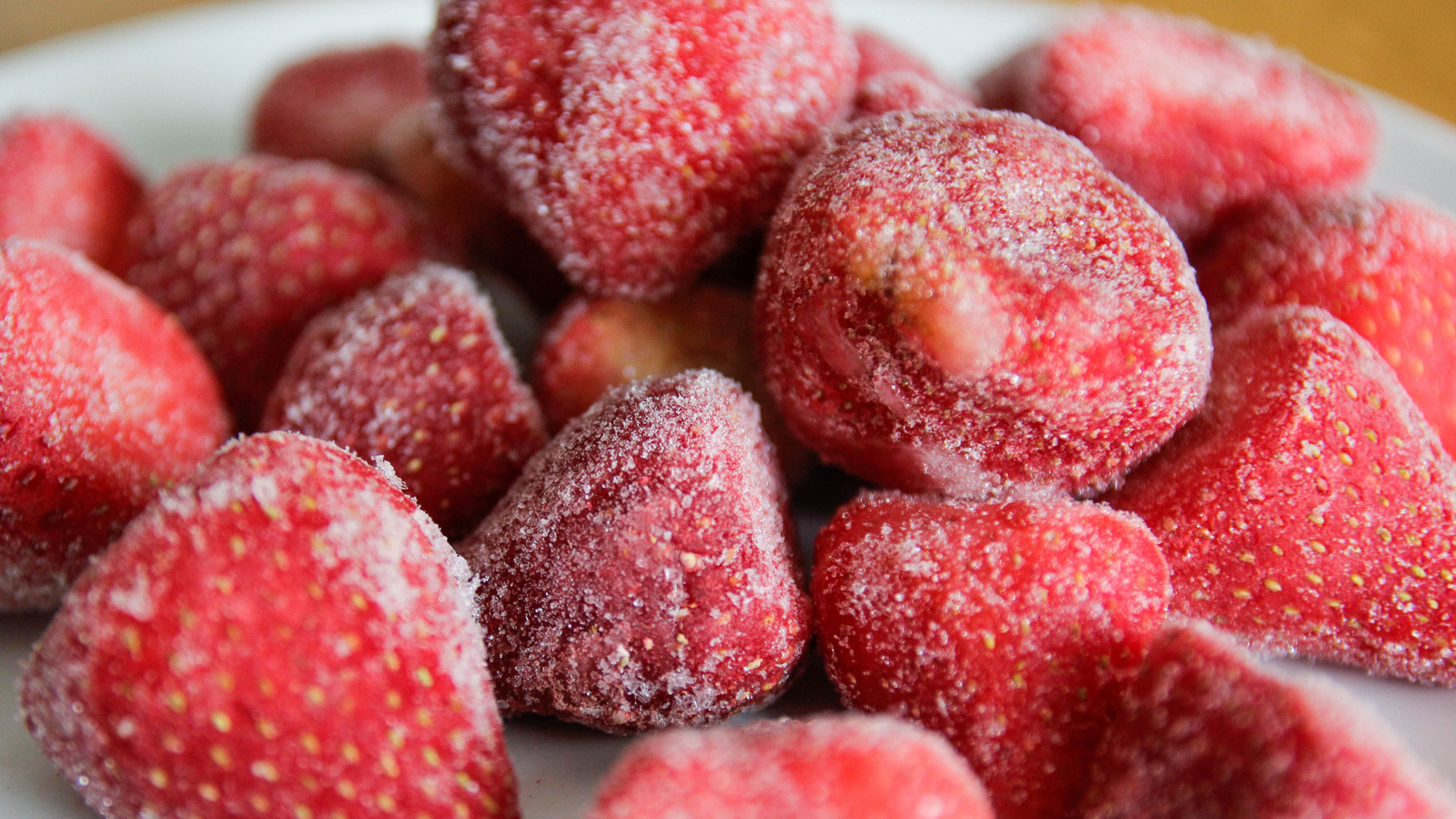There's nothing quite like biting into a perfectly ripe cantaloupe — juicy, sweet, and fragrant. But choosing one at the store can feel like a gamble. With their tough skins and varying sizes, cantaloupes don't always give up their fruity secrets easily.
The good news is that with a few simple tips and using your senses, you'll soon be picking out these like a pro. Start by checking the overall color of the rind. A ripe cantaloupe should have a warm beige or creamy golden undertone beneath its netting.

That thick, webby outer layer should appear raised and well-defined. If the skin underneath is green or grayish, it could mean the melon was picked too early and may not ripen properly. On the flip side, avoid melons with overly dark spots or mold, which could indicate spoilage.
Next, pick up the cantaloupe and compare it to others of similar size. A ripe melon is juicy, which makes it feel heavier than you would expect – this is also why it's a very . If it feels unusually light, it may be dry or underripe inside.
Trust your hands here — a weighty cantaloupe usually means it's a good one. You can also gently press it near the stem. It shouldn't be as hard as a watermelon, but it shouldn't be mushy, either — like a barely ripe avocado.
Sniff for sweetness and give it a shake Don't fall victim to the , and give that cantaloupe a good sniff; it should have a sweet, earthy, and floral smell. No scent means no flavor. Next, you'll want to inspect the stem end, where it was plucked from the vine before heading your way.
A ripe cantaloupe will have a slightly indented stem scar where the fruit (hopefully) naturally detached from the plant. If it looks jagged or torn, it might've been picked too early, which means less flavor for you. Cantaloupe doesn't really ripen after harvesting, though it can grow softer if left on the counter or stored in a brown paper bag.
You've already scared fellow shoppers away by smelling all the melons, so go ahead and shake some while you're at it. No sound is good; if you hear seeds hitting against each other, that probably means the melon is too ripe. Toss that one back.
Once you've gotten your golden orb home, with proper storage. If it's ripe and you're not ready to carve it up, it'll last in the fridge for around five days. Once cut, keep the seeds on when storing it in the fridge, because they actually help keep the fruit from drying out.
Spritz on a bit of lemon juice, toss the fruit in an airtight container, and it will be good in the fridge for a couple of days. With a little color-checking, sniff-testing, and strategic squeezing, you'll gain true cantaloupe confidence. Recommended.
Food

The Best Way To Choose A Ripe Cantaloupe At The Store

It's not like you can take a peek inside a cantaloupe before you buy it, so here's what to look for so you know if the fruit is actually ripe.















